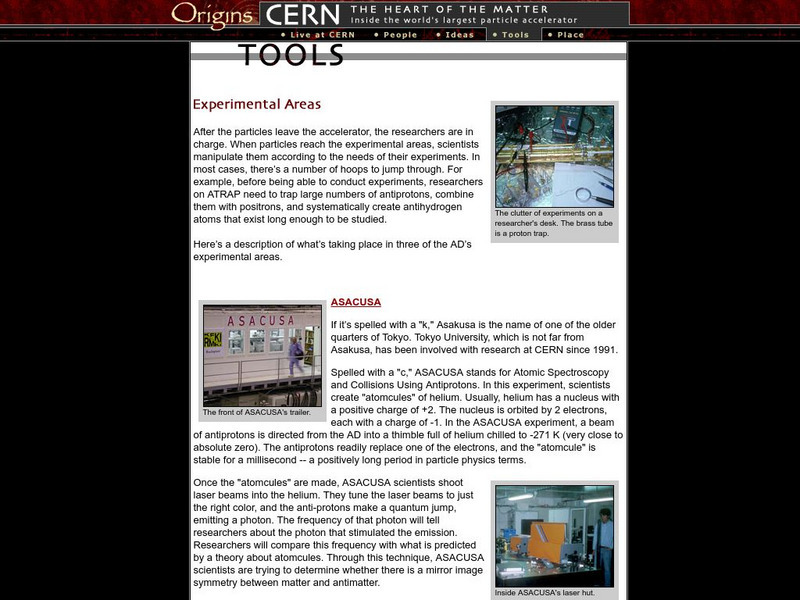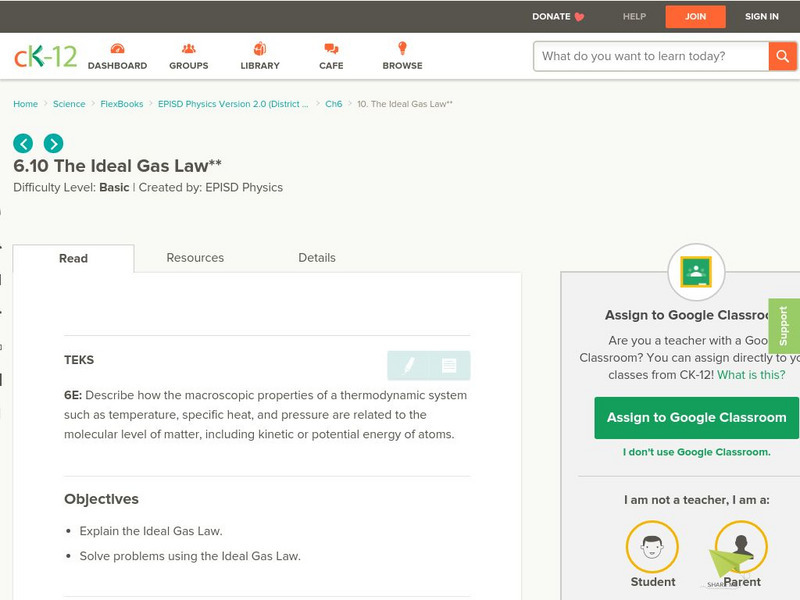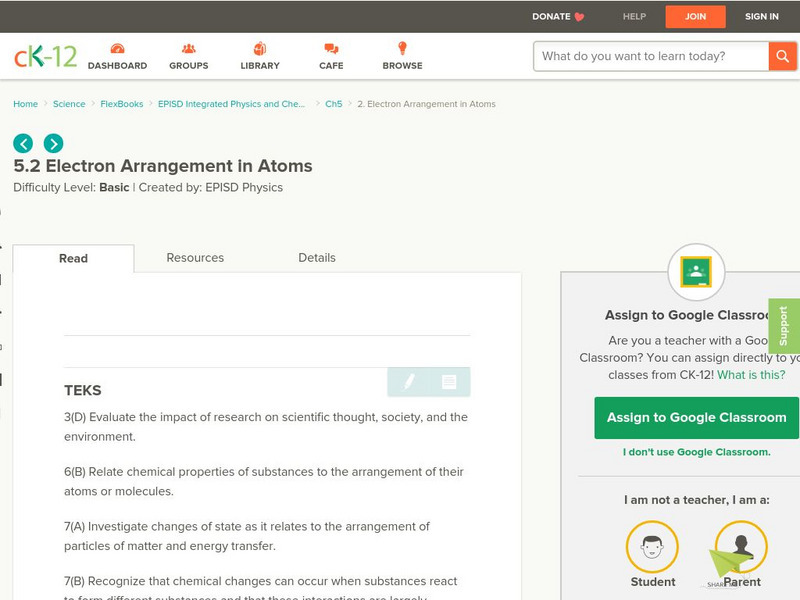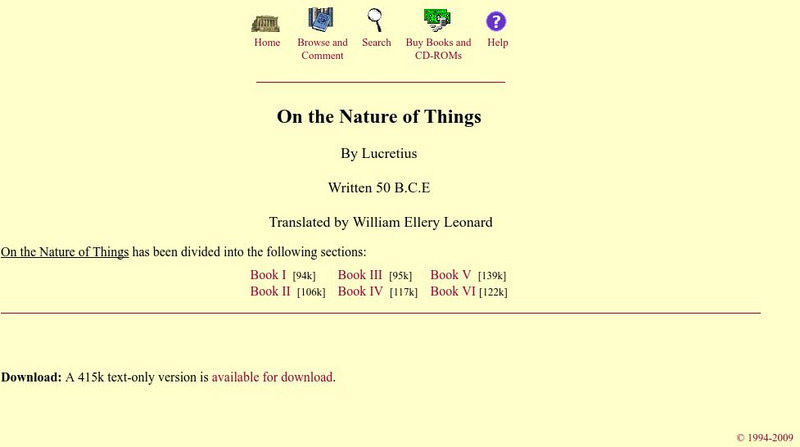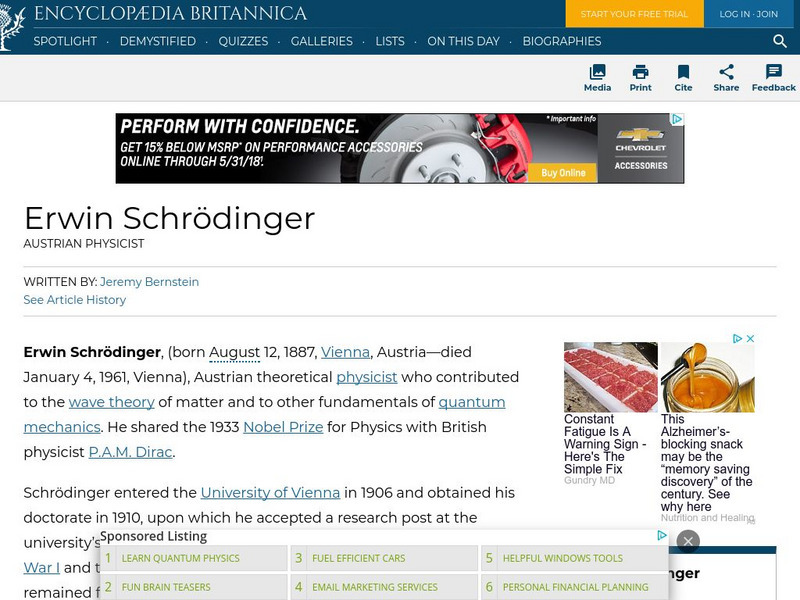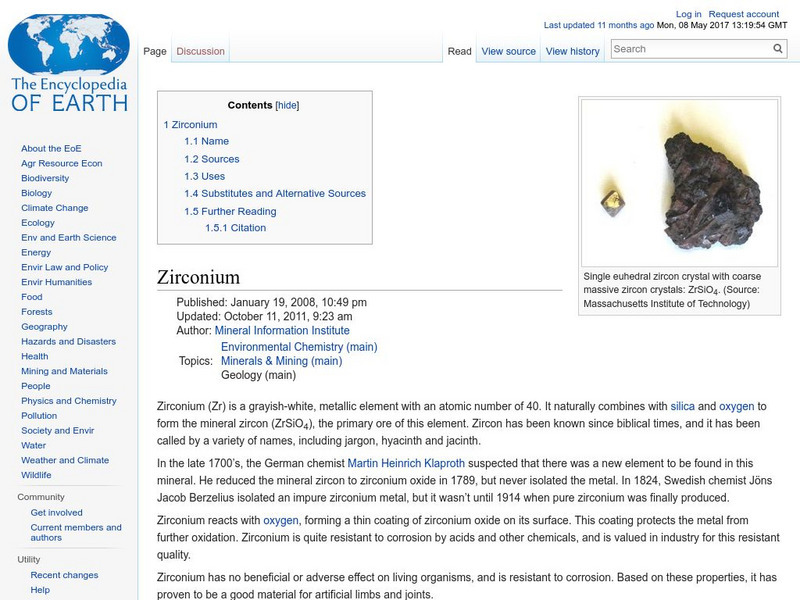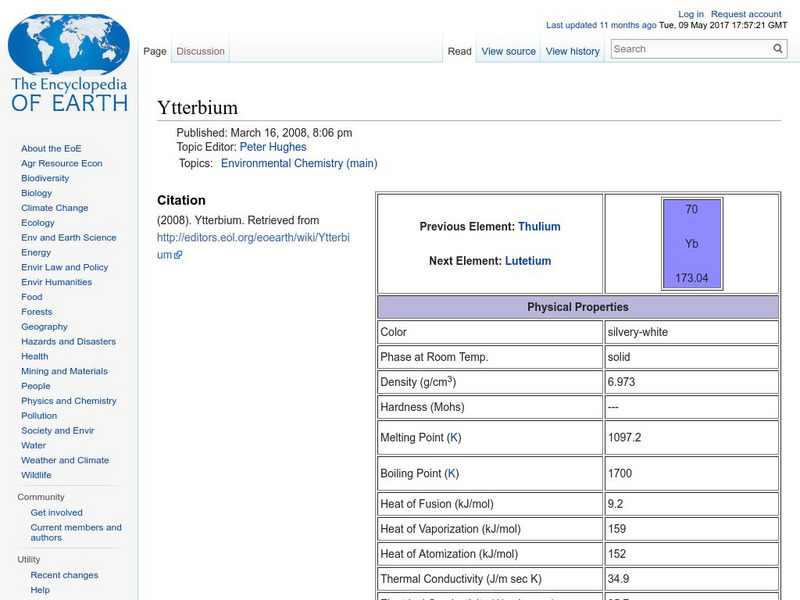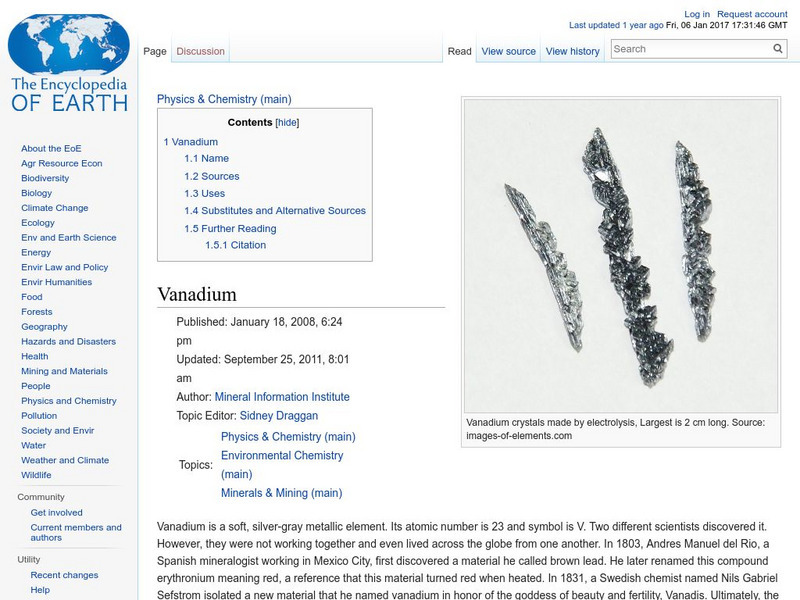Other
Historical Society of Princeton: Einstein in Princeton
Biography of Albert Einstein from an exhibit at Princeton University.
Exploratorium
Exploratorium: Cern: The Antiproton Decelerator
Explains the function of the Antiproton Decelerator, a device at the European Center for Nuclear Research used to "slow down" bunches of antiprotons for use in experiments.
Exploratorium
Exploratorium: Cern: Experiments With Antimatter
A description of the two primary experiments conducted at CERN on antimatter: ASACUSA, an attempt to form "Atomcules," using antiprotons; and ATHENA, an experiment to compare the properties of hydrogen and antihydrogen.
Open Curriculum
Open Curriculum: The Atom
Learn about atoms and their properties of motion with this illustrated article.
PBS
Science Odyssey: Heisenberg States Uncertainty Principle
Explains the Heisenberg Uncertainty Principle, that it is impossible to know both the momentum and position of an electron, along with describing the impact that it made upon the scientific community upon its introduction in 1927.
Wikimedia
Wikipedia: Max Planck
Discover the life and accomplishments of the great German scientist Max Planck. This site also provides links to sites explaining theories and scientific terms that are associated with Planck.
Other
Grant Design: Glossary of Materials Attributes Breakdown
This resource contains a lengthy list of definitions of a variety of material properties related to solid strength and elasticity. The definitions are accompanied by equations and metric unit information.
Famous Scientists
Famous Scientists: Albert Einstein
Read a short biography about Albert Einstein, and find out how he discovered the general theory of relativity.
University of St. Andrews (UK)
University of St. Andrews: Max Planck
This site is a mixture of a short biography and quotes on German physicist Max Planck.
OpenStax
Open Stax: Conservation of Momentum
From a chapter on Linear Momentum and Collisions in a Physics textbook. This section of the chapter discusses the principle of conservation of momentum and the expression for it, along with examples. It then explains the role this...
Corrosion Source
Corrosion Source: Erbium
This site, which is provided for by Corrosion Source, gives a summary of basic physical data on erbium. This is a great site to check out for information on the subject.
Chem Tutor
Chem Tutor: States of Matter
A very descriptive site that allows students to understand the different states of matter at the atomic level. Also discusses the process of phase changes and displays phase change graphs. Thermochemistry is also touched upon for high...
Other
Fermilab: What Are the Basic Forces Between Particles?
Get an introduction to the four forces that interact between atomic particles. With the help of a simulation you'll see how building reconstruction would be affected without each of the forces.
CK-12 Foundation
Ck 12: The Ideal Gas Law
[Free Registration/Login may be required to access all resource tools.] Students read about and explore video clips, diagrams, and example problems using the Ideal Gas Law.
CK-12 Foundation
Ck 12: Structure of the Atom
[Free Registration/Login may be required to access all resource tools.] Students learn about the important discoveries of subatomic particles, and how they led to our current understanding of the atom.
CK-12 Foundation
Ck 12: Electron Arrangement in Atoms
[Free Registration/Login may be required to access all resource tools.] The focus in this learning module will be on the complexity of electron arrangement in atoms.
CK-12 Foundation
Ck 12: Trends in the Periodic Table
[Free Registration/Login may be required to access all resource tools.] Students investigate specific properties that can be predicted by an element's position on the periodic table. Additionally, they will look at the formation of ions,...
Able Media
On the Nature of the Universe: Study Guide
A study guide for Lucretius's work, "On the Nature of the Universe."
Massachusetts Institute of Technology
Mit: Internet Classics Archive: On the Nature of Things
This site from MIT contains the entire work "On the Nature of Things," by Lucretius, his primary philosophical work which expounds the Epicurean worldview.
Other
Granta Design Limited: Glossary of Materials Attributes
From the Cambridge Engineering Selector web site. Contains a lengthy list of definitions of a variety of material properties related to solid strength and elasticity (and more). Definitions are accompanied by equations and metric unit...
Encyclopedia Britannica
Encyclopedia Britannica: Erwin Schrodinger
This site gives brief biographical information about Austrian physicist, Erwin Schrodinger.
Encyclopedia of Earth
Encyclopedia of Earth: Zirconium
Information about the element Zirconium, atomic number 40. Covers history of its discovery, sources, physical properties, atomic properties, how abundant it is on the Earth, details about permissible exposure, uses, and possible...
Encyclopedia of Earth
Encyclopedia of Earth: Ytterbium
Information about the element, Ytterbium, atomic number 70. Covers physical properties, atomic properties, how abundant it is on the Earth, and details about health-related regulations.
Encyclopedia of Earth
Encyclopedia of Earth: Vanadium
Information about the element, Vanadium, atomic number 23. Covers its history, sources, physical and atomic properties, prevalence on the Earth, details about any health-related regulations, uses, and possible substitutes.
Other popular searches
- Atomic Physics Bohr
- Atomic Physics Rutherford
- Sub Atomic Physics
- Atomic Physics "Elements
- Atomic Physics Elements
- "Elements" Atomic Physics
- Atomic Physics \"Elements


